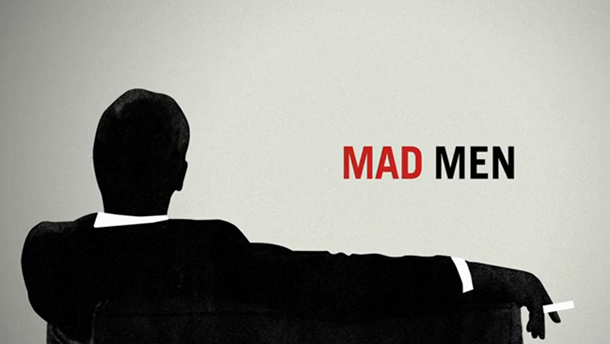My wife and I are currently deep into the AMC series MAD MEN. The success of this show is due to its strong characters, retro vibe with painstaking, historically accurate styling, and the dramatic interplay between strong personalities—both rising stars and has-been train wrecks—set in a glamorous era with an underbelly of extramarital scandals, misogyny, discrimination and excessive drinking and smoking.
I’ll admit I am a sucker for the sixties. I grew up during this decade, and the aesthetics of the architecture, product design, furniture, fashion and interiors are imprinted deep in my consciousness. My earliest memories of shopping malls, Jetsons-styled cars, TV shows, and visiting my mother’s office at Kodak in Rochester, New York are like scenes straight out of the show.
But what elevates the appeal for me to another level is the advertising and marketing wisdom sprinkled throughout: in meetings; casual dialog; at Sterling Cooper, the ad agency; with clients; and between the creative staff. All the excesses, drama, and questionable client and product choices aside, there is some great stuff here. Timeless, fresh, strong principles.
The main character, Don Draper, is intelligent, experienced and polished, and seems to be styled after David Ogilvy the iconic advertising genius named by Advertising Age as Person of the Century in 1999. Ogilvy’s first book, Confessions of an Advertising Man, today still considered required reading for advertising professionals, is even mentioned in one episode set in the year of its publication, 1963. Draper’s pitches to clients, his dialog with superiors and staff, and his creative process have a no-nonsense authenticity. He demonstrates a clarity of thought and a vision that we aspire to today as we strive to understand each client and their industry, their product or service, and their customers’ demographic(s). The writers have done their homework, giving Mr. Draper several shining moments that are dead-on:
(during a client pitch)
“Advertising is based on one thing: happiness. And do you know what happiness is? Happiness is the smell of a new car. It’s freedom from fear. It’s a billboard on the side of a road that screams with reassurance that whatever you’re doing is OK. You are OK.”
(responding to his copywriter’s assertion that ‘sex sells’)
“Says who? Just so you know, the people who talk that way think that monkeys can do this. They take all this monkey crap and just stick it in a briefcase completely unaware that their success depends on something more than their shoeshine. YOU are the product. You- FEELING something. That’s what sells. Not them. Not sex. They can’t do what we do, and they hate us for it.”
(pitching Kodak on a campaign for a new product)
“Nostalgia – it’s delicate, but potent. …”nostalgia” literally means “the pain from an old wound.” It’s a twinge in your heart far more powerful than memory alone. This device isn’t a spaceship, it’s a time machine. It goes backwards, and forwards… it takes us to a place where we ache to go again. It’s not called the wheel, it’s called the carousel. It let’s us travel the way a child travels – around and around, and back home again, to a place where we know are loved.
In addition to his solid marketing and advertising knowledge, what I also admire about Don Draper is, despite his flaws, he is loyal and principled, qualities rare in his environment. Confident and relaxed, he cares about his relationships with clients and is passionate about what he does. Here he speaks his mind to an agency partner about ditching an existing client for a larger one in the same industry:
Don Draper: “We already have an airline.”
Roger Sterling: “We don’t have American.”
Don Draper: “Well, that’s right. We have the one whose planes didn’t just fall out of the sky.”
Don Draper: “We HAVE an airline. What kind of company are we going to be?”
Roger Sterling: “The kind where everyone has a summer house?”
There are short vignettes showing how research plays a huge part in what drives creative campaigns and media choices at Sterling Cooper. They discuss sales statistics in certain markets, test market products, have in-house focus groups. I can relate to the sometimes humorous creative tension between art director, copywriter and account manager which breeds great ideas. And there is no shortage of eye candy for the “seasoned” ad and design professional: retro publications; classic ad campaigns; vintage office technology; client presentations featuring 1960’s-styled marker renderings and sketches; using type galleys, wax, Exacto knives and illustration board for mechanical art preparation—when I started in this business in 1981, there was no Photoshop or Illustrator.
In addition to great storytelling, the research, eye for detail, passion and most likely personal experience of creator Matthew Weiner has contributed to an experience for the viewer that is both entertaining and educational. The wisdom of showing that—despite the flavor and specifics of the era—good design, marketing and advertising are timeless, has made this a substantial, worthwhile watch. I’m hooked.
Photo credit: http://www.artofthetitle.com/title/mad-men/





How looking back can help you look forward > Advertising. Marketing. What’s Past is Prologue.| Change Conversations http://t.co/P8sHUK8h